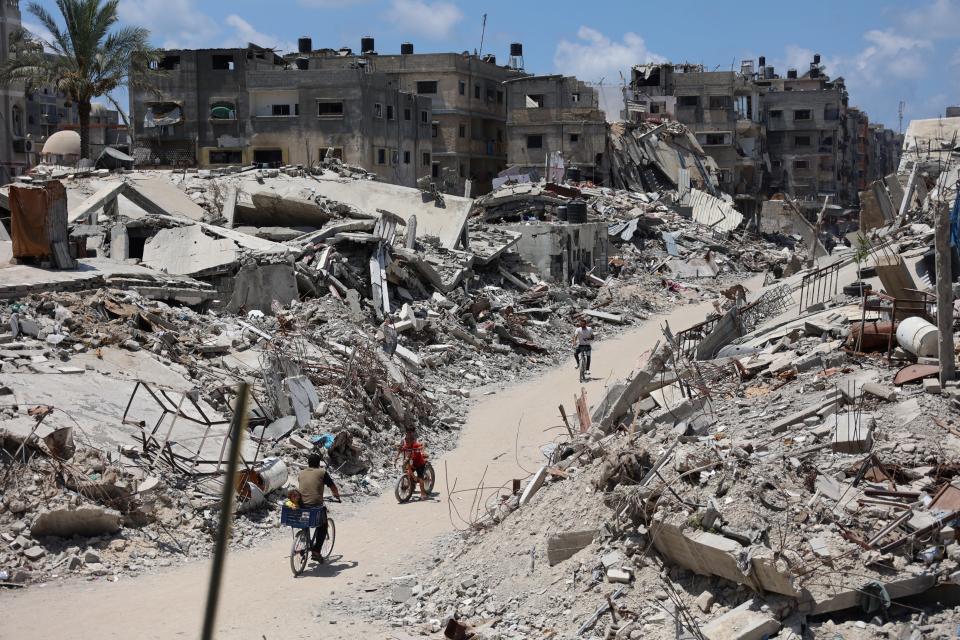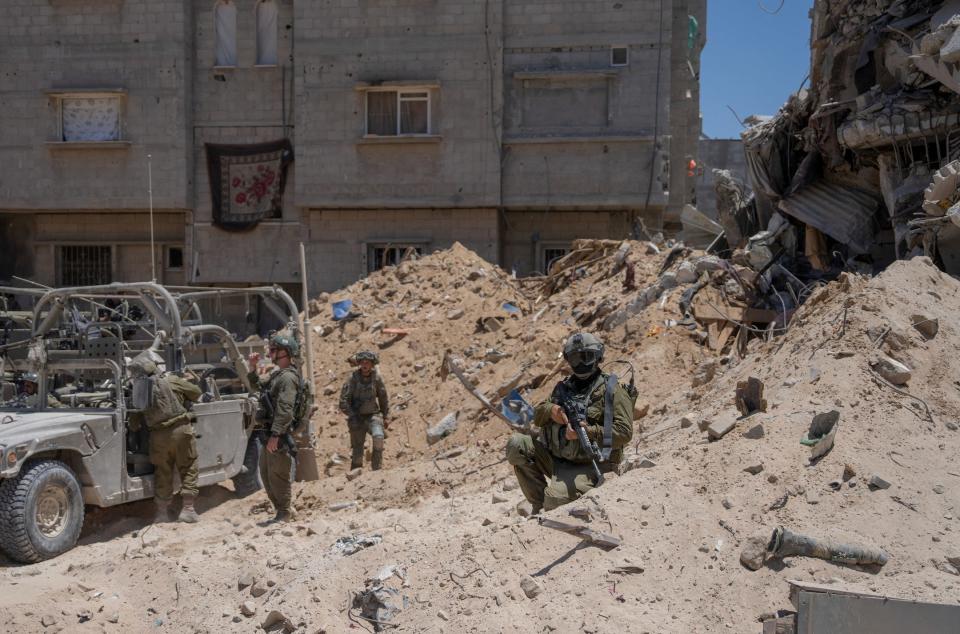How bombing Gaza to rubble created headaches and a tough fight for invading Israeli tanks and troops
Israel launched a scorched-earth campaign in Gaza in response to Hamas' October 7 terror attacks.
This intense campaign has destroyed large portions of the coastal enclave.
Conflict analysts say Israeli soldiers struggled to fight through the rubble in Gaza.
Israel's military campaign in Gaza has turned vast swaths of the coastal enclave into ruins, making it extremely difficult for soldiers to operate in the rubble, according to a recently published report.
The "rubblization" of the urban battlespace in Gaza caused headaches for armored and infantry elements of the Israel Defense Forces as they sought to maneuver and identify Hamas targets, analysts at the UK-based Royal United Services Institute think tank described in a report that was published earlier this month.
The IDF launched a devastating and widespread bombing campaign of Gaza immediately following Hamas' October 7 massacre in Israel, during which some 1,200 people were killed. That air campaign paved the way for ground forces to move in later to conduct clearing operations.
The bombing campaign — which employed a mix of precision and unguided munitions — combined with intense artillery fire and consistent ground fighting reduced large portions of the Palestinian enclave to rubble.
More than 39,000 Palestinians have been killed in the war so far, according to figures from the local Hamas-run Gaza health ministry, which does not distinguish between civilians and combatants in its casualty reporting.

Looking back on early operations, Jack Watling and Nick Reynolds, land warfare experts at RUSI, wrote in their review of Israeli operations in Gaza during the fall that "although the IDF made rapid progress during the early break-in, rubblization caused a range of problems."
One of the issues that arose was that Israeli tank drivers had a hard time figuring out the depth of a crater left by an explosion while using night vision. Some armored vehicles then drove into holes and got stuck. To make matters worse, the IDF has suffered from tank shortages during its monthlong campaign in Gaza.
The destruction in Gaza also turned the battlespace into an "irregular, congested, and complex visual environment," the RUSI conflict analysts said. This made it difficult for ground units to accurately identify and designate Hamas targets.
For instance, "forces that had been trained to talk one another onto targets using the windows and floors of a building as reference points struggled to rapidly convey where enemy were to one another in structures that no longer had uniformity," the analysts said.

Former US military and intelligence officers warned during the early stages of the Israel-Hamas war that the urban fighting in Gaza would be incredibly complex for the IDF, especially the militant group's notorious tunnel network.
Because the destruction within Gaza was largely the result of the Israeli bombing campaign and artillery fire, the RUSI analysts argued that the IDF should have factored these characteristics into the planning of its ground operations.
"The IDF had persistent challenges with rubblization, both because it created obstructions for movement and degraded the ability to describe the terrain and thus coordinate and control fire," the conflict analysts wrote.
"The IDF has concluded that specific training is necessary for what it is terming 'devastated terrain warfare,'" they added. "Specific drills for talking soldiers onto target when looking at irregular terrain must be practiced."
The recently released RUSI report only focuses on fall 2023 operations, but the Israeli military campaign has also run into issues this year as well. For example, the IDF has struggled to prevent Hamas from returning to sectors it had already cleared through hard-fought and bloody battles.
Read the original article on Business Insider

